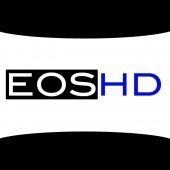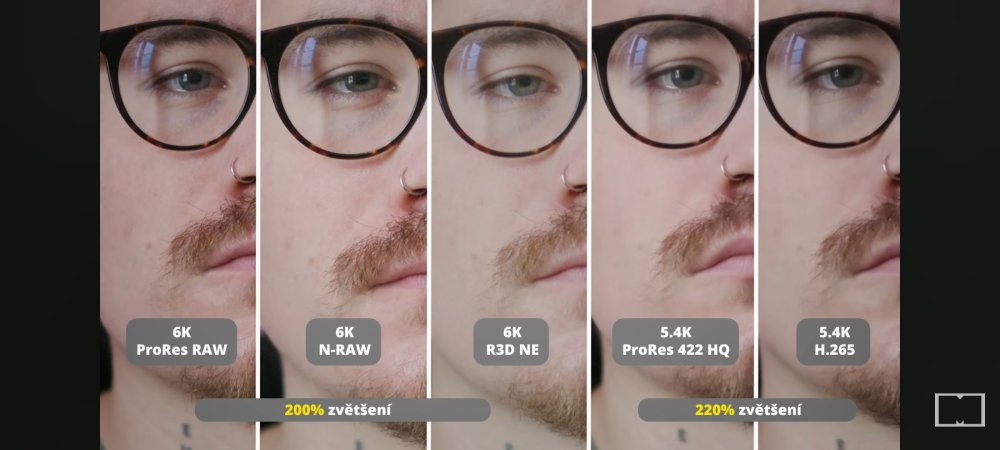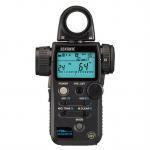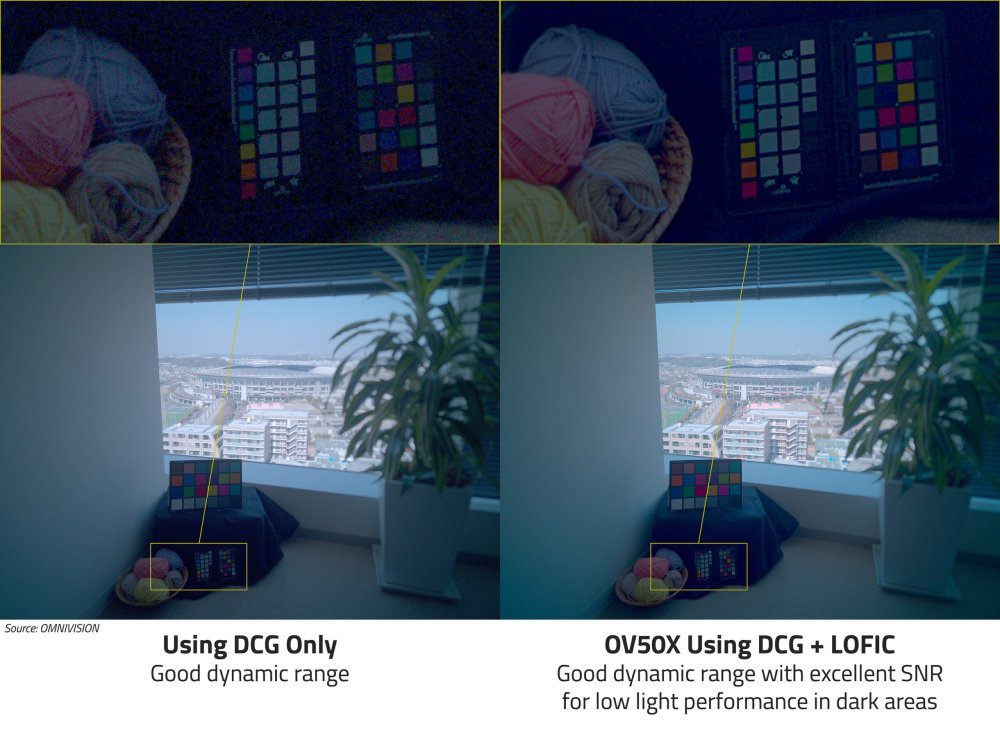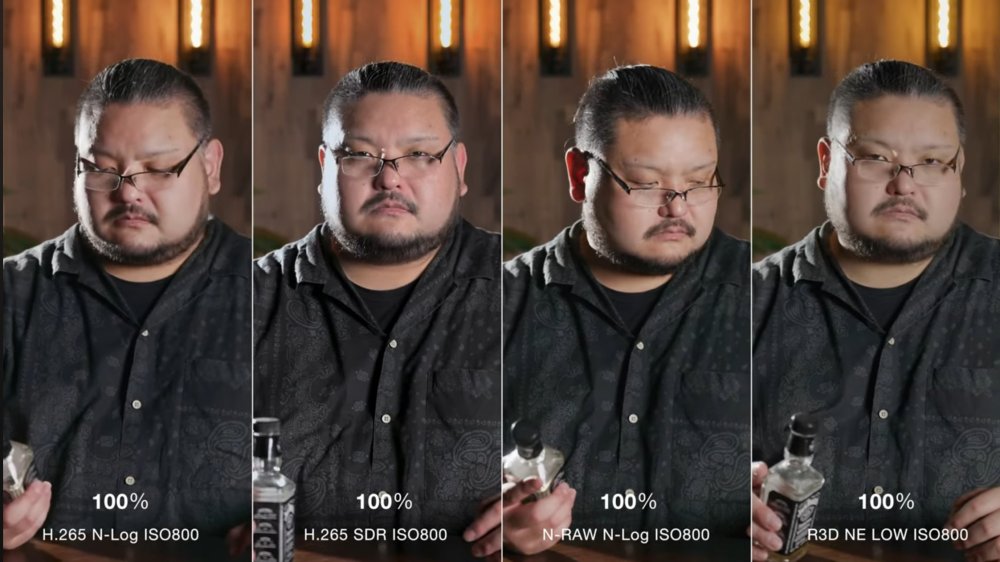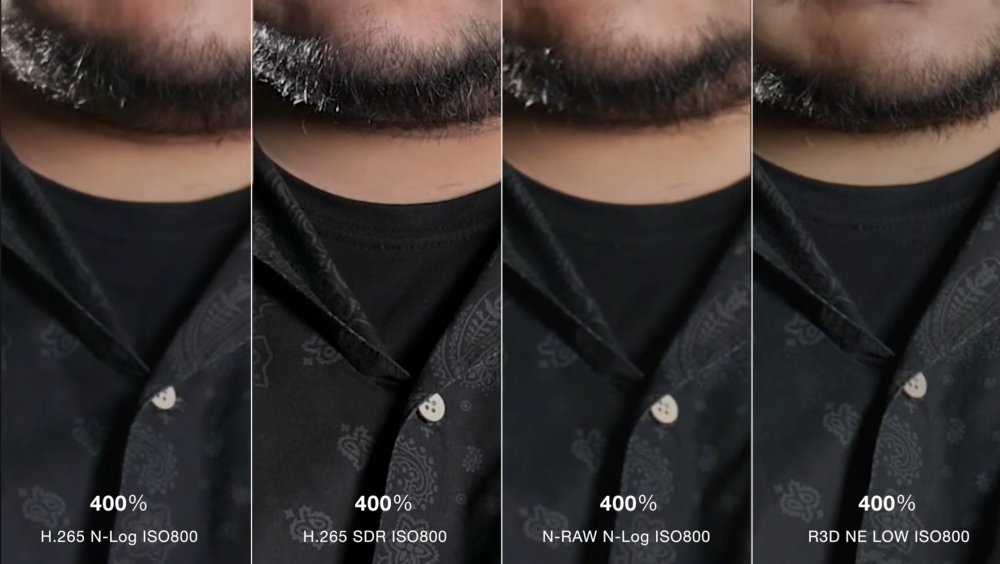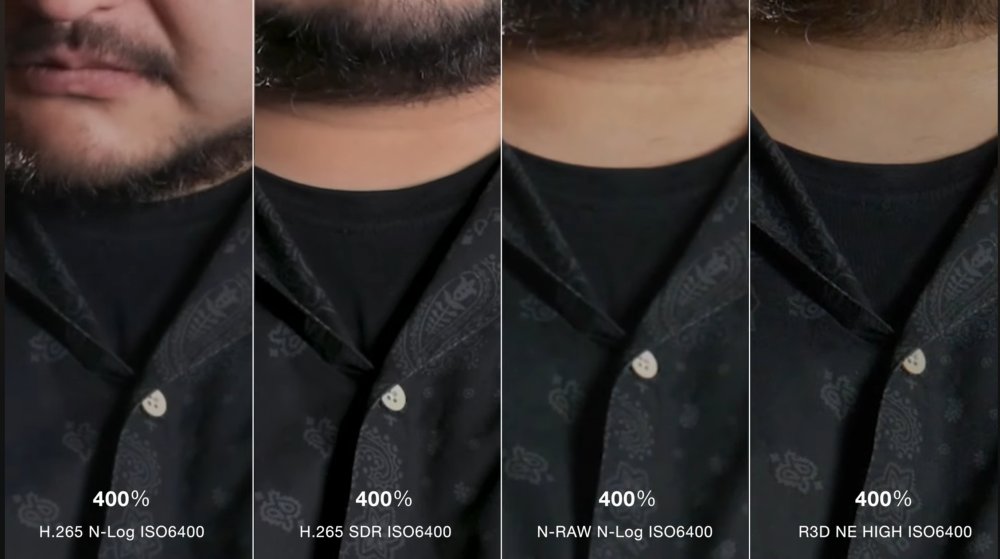All Activity
- Past hour
-
I prefer H.265 as well, over the pseudo raw formats. Cinema DNG is still the best quality RAW in terms of the film look and unprocessed sensor readout.
- Today
-
I don't think photographic RAW can be compared to video, or maybe I didn't understand your point. With a 4TB hard drive, you can store infinite RAW photographs. I dive almost every week and usually bring home about 10 minutes of good footage, which I'd ideally like to archive. For special projects, I might get up to 20 minutes. This means between 100 and 300 GB per session. That's not a small amount. Now, it's clear that shooting in RAW is not a medical prescription, but I was wondering if it's a practical solution for everyone, considering that's all anyone talks about now.
-
 Davide DB reacted to a post in a topic:
RAW Momentum?
Davide DB reacted to a post in a topic:
RAW Momentum?
-
It's also worth pointing out that jpeg is, as far as I know, 8-bit only. It's one of the reasons that modern iPhones (and maybe Android?) default to HEIF instead.
-
Default value of sharpening for NRaw in Resolve is defined in Project setting Camera Raw page and it seems to be 10 out 100 and you CAN set it to zero. Sharpness can be then adjusted on clip level too. With sharpness set to 10 NRaw looks clean, but calm, not over sharpened For Red Raw Resolve has Image detail that can be set to low, medium and high. Z6iii NRaw files pretty surely do not have default noice reduction when you compare same file named to NEV and R3D with R3D’s chroma NR activated.
-
 Jahleh reacted to a post in a topic:
Nikon Zr is coming
Jahleh reacted to a post in a topic:
Nikon Zr is coming
-
In still photography, the storage space issue for RAW is less pressing than in video and since each still image can be studied for a long time (at least in print) people can pay more attention to quality (and photographers can afford more time into editing of individual frames with masks etc. while in video it would be extremely tedious to make exposure blending or other manually drawn mask based operations on a frame by frame basis). In the early years of digital system cameras, the difference between RAW and JPEG was more obvious and people got used to RAW because the image details were better and of course the files are more editable. For video, I suspect that RAW usage will be more limited to high end where there are professional colorists etc. and occasional shooters who don't shoot a huge quantity of material. But maybe I am wrong. 😉
-
Maybe NRAW has a metadata piece that automatically activates a default value of sharpening and noise reduction in Davinci that you can't set to zero. They should compare the files in REDCINE-X Pro.
-
Different post-processing pipelines and their settings for N-RAW and R3D NE may be what is causing such differences and not necessarily different primary data in the file, unless the person making the video actually used the renaming hack. However, of course it is possible that the data are different in the files. However, sharpening images and storing them in the raw format makes no sense as the images are not in RGB format at that time. Sharpening in that phase could mess up the colors so I doubt they are doing it.
-
It took me a long time to be persuaded of the advantage of raw vs Jpeg, but once I gave in, I saw the light. I suspect if in camera storage and subsequent drive storage was not an issue, I might be tempted. If I was to earlier in my career rather than the twilight, even more so, but I have decided against. Very tempted with the new Zr, but in the end I have made the decision that I am better putting my effort elsewhere. There are 3 areas for me where I could invest my time & energy. 1. Tech 2. Creativity 3. Marketing I choose 2&3 going forward because 1. is as good as it needs to be for me.
-
Agreed. However, as you have noted in your example, Sony's SLVS-EC interface is designed primarily for delivering high-resolution and high-framerate capture and not necessarily for increased bit depth: https://www.sony-semicon.com/en/technology/is/slvsec.html#:~:text=Select content-,Overview,more pixels and higher speed. https://www.automate.org/tech-papers/the-evolving-landscape-of-cmos-image-sensor-interfaces#:~:text=High-,SLVS-EC (Scalable Low-Voltage Signaling with Embedded Clock,and data transfer are critical.
- Yesterday
-
-
 andrgl reacted to a post in a topic:
Nikon Zr is coming
andrgl reacted to a post in a topic:
Nikon Zr is coming
-
In an unregulated state, all the money will go to the owners of the AI built on stolen data (from creatives without compensation) and no working person will have money. It'll be like the 1920s again, and remember the tariffs then made the US depression spread worldwide, leading eventually to World War II. After which a period of relative decency began, until the 1980s where all the money more and more were given to the fewest of people, leading eventually to Brexit, Trump, the Russia-Ukraine war. All of these phenomena since the 1980s happened because the multimillionaires and billionaires want to have all the money and keep it too. Adapting is the same as capitulation which makes working people the equivalent of slaves. All the money will go to the techno-oligarchs and their criminal politician friends. The only way to solve the problem is to make AI models based on stolen data illegal and erase them or give due compensation to the creators of the original teaching data that was used to make the model, and tax billionaires so that they end up with only the money that a decent life requires. This would restore fairness and decency in society and good lives to ordinary people.
-
-
The world is changing fast. The real challenge is adapting or we’re out of the game. Brexit happened nine years ago because of this regulation you mention, and Trump (as well as others like him) rose for similar or related reasons, at least partly (the phenomenon is complex!), I’d tend to dare myself to guess.
-
Do you have a link to the video? For me, this could be just a sharpness setting or the person might be moving slightly. One thing this tells me, is that the H265, is not as bad as some people have made it to be.
-
I’m not complaining about the new, i’m fairly indifferent towards it. It won’t really affect my life very much either way. I just fail to see if this is an interesting topic compared to a labor market that keeps getting worse and whatever capital is trending towards now. The complete devaluation of quality in arts (and even commerce fwiw) and the tendency to constantly cut corners by automating tasks, or even straight up skipping the entire process and straight up generating content from large data models has had an extremely negative impact on my life, as well as others. The fact that no one with any political power anywhere wants to regulate it and just sees it as a given is also bad i think.
-
As a just hobbyist I don’t probably need Raw, but viewing from a 3m screen you don’t want to view something shot on a phone in crappy HDR mode either. After starting to shoot Raw I’ve wanted to shoot more, to see how the Raw clips look. Also tinkered more in Resolve to get better understanding how to get better looking end result. Got also new lenses to get better footage from different angles. Could have just done the same with Panasonic H.265 but somehow it started to feel boring. Sometimes change is good if it makes you want to shoot and learn more. The only bad thing about Raw is cost of storage, which might make you trim the clips too tight to save space. For CPU and GPU in Apple land 6k raw isn’t any heavier to edit than 6k H.265, unless you need NR, which is as heavy as using speed warp to slow down 6k25p H.265. 4TB SSD costs now the same than 2TB a few years ago.
-
LOFIC is inherently noisy, because its optimized for saturation. Its like having a sensor that its base ISO is ISO 25, but its max ISO is 400. Thus you need a second readout optimized for low noise to combine the two. And you can't get really good noise performance in the second one until you go up in size to at least 1 inch format.
-
 Davide DB reacted to a post in a topic:
Nikon Zr is coming
Davide DB reacted to a post in a topic:
Nikon Zr is coming
-
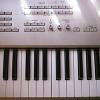
All music at soundimage.org is now free for commercial use
Eric Matyas replied to Eric Matyas's topic in Cameras
Happy October Everyone, More free music tracks to share with you. Free is good. 🙂 On my Action 3 page: WILD WEST COAST RACING 2_LoFi WILD WEST COAST RACING 3_LoFi WILD WEST COAST RACING 4_LoFi https://soundimage.org/action-3/ On my City/Urban 3 page: THE INSOMNIAC WANDERS_LoFi https://soundimage.org/city-urban-3/ And on my History page: THE ANCIENTS_LoFi https://soundimage.org/ancient/ Content creators often ask me: "Can I use your music in commercial projects?" The answer is: Yes! Please do! Just be sure to properly attribute me. Attribution information is here: https://soundimage.org/attribution-info/ If you have other questions regarding attribution, or anything else, feel free to email me anytime...I love to hear from fellow-creatives. You'll find my email address at the bottom of the Attribution Information page on my site, on my homepage and on my Custom Music page. That said, enjoy, stay safe and keep being creative. -
It doesn't look 18 stops. Also the shadows are insanely noisy. Maybe they meant 10 stops and it got translated as 18 stops. Also, except the noise pattern, both pics seem to have similar dynamic range.
-
That would make sense. Why would Nikon buy Red, introduce RedCode Raw into a camera and trick everyone by using NRaw and calling it RedCode? Seems kinda pointless. I am no expert in coding, but wouldn't it make more sense that Nikon had to implement R3D into the "language" that communicates with their processors. So R3D was reconfigured slightly. Just a guess, but has anyone tried to rename the R3D files as NRaw... I would guess that it works.
-
Same arguments were valid in still photography. Lot of news/event shooters stuck with jpeg while the rest of photographers see the "jpeg only" sign on the camera display as a catastrophe. Its been always about having flexibility for artistic purposes. If your work is concentrated on documentation of real world as it is, Standard color profile Jpeg is the best choice.
-
Either these reviewers don't know what they're doing or R3D NE is not exactly repackaged NRAW. Nlog is noticeably softer, in both NRAW and h.265. R3D details is close to SDR h.265, even at second base ISO. Even the skin tone is different
-
Which, to some extent, just says Nikon is spending more on marketing which means they can hire better shooters/editors. 😃
-
"Need" is a strong word. It's likely that a lot of the benefits of 12-bit raw could be realized by just using a 12-bit variant of any other codec. I'm told that a lot of productions shot ProRes 4444XQ when they had Arriraw available. That said, PRR HQ is about the same quality as 4444XQ, but with much smaller file sizes. I think it's because PRR is non-debayered which means it's only saving 1 value per pixel instead of 3. A limiting factor, though, is that a lot of processors and GPU's only have onboard support for accelerated decode of 10-bit HEVC - so 12-bit will seem really slow/laggy on a lot of people's systems. Otherwise, people will talk about the ability to change white balance in raw, etc, but I've personally found those things to be a little bit overblown. If you're swinging from 2300k to 5600k, maybe, it's better to have all of the color channel info, but if you captured at 5600k and want to move to 5200k, it's probably fine. And, of course, people will bring up the ability to change ISO in the raw import, but this is asinine. It is convenient as a quick way to change exposure, but is functionally equivalent to just adjusting an exposure slider for non-raw footage (again, as long as the file is thick enough that the all of the details are there). For me, I like having thick files with a lot of dynamic range - so for now, I prefer cameras with raw. That's absolutely subject to change if people start shipping cameras with 12-16-bit HEVC. I think that the popularity of the FX3/FX6 and the sheer number of people making great-looking stuff with them serves as a great allegation against the necessity of raw. It also really depends on your goal/intention. I just got back from 2 weeks in Namibia. I chose to bring my GFX 100 II and didn't bring an external recorder for raw so what footage I shot of animals there will be all 10-bit ProRes 422 (5.8k or 8k). I also had an EOS R5 with me which was capable of 8k raw, but I ended up just giving it to my gf to use the whole time to shoot photos since the animals tended to be more than a few meters from the car and it let her see them (her with the EF 100-400 f/4.5-5.6 and me mostly with the GF 500/5.6). I don't think that, even once, I thought to myself that I should take back the R5 to capture some raw footage of a giraffe drinking from a watering hole. If anything, I thought "does this really need to be ProRes?"
-
It's easy but archive storage it's not cheap. I mean, for my use case during the years I've building an underwater footage archive. nevertheless i understand that who works on events does not archives footage forever.

